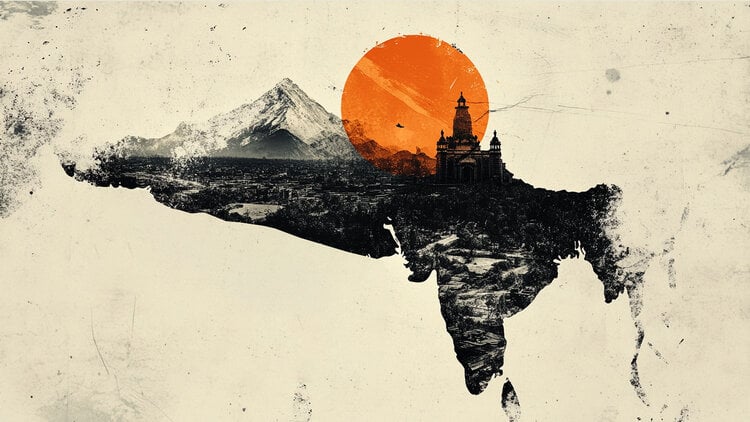Like every four years, the whole world would like to have a say in the presidential election in the United States. But it is the Americans who appoint their president. And again… not all. The electoral system is such that only a few states decide the fate of the entire country. Decisive states, the famous « swing states », which are the object of all the attentions on behalf of Donald Trump and Joe Biden. Local televisions are inundated with political advertisements there, the lawns in front of the houses strewn with signs and it is in these regions that the two candidates hold most of their meetings.
These are the places that will have to be scrutinized on the night of November 3 to 4. All the grand voters of a state being attributed to the one who collects the most votes there, it only takes a small number of votes to shift it to one side or the other. The ballot could therefore depend on a few tens of thousands of votes, cast in sometimes remote regions. Here’s our guide to states to follow:
Florida
It is the most important state, the maker of presidents par excellence, not least because it is the « swing state » the best endowed in terms of the number of electors (29). We remember the psychodrama that was held there in 2000, when George Bush won after multiple recounts and a long legal battle. Like 20 years ago, Florida could nominate the future president, as it is estimated that Joe Biden cannot lose the general election if he wins there. Trump knows this and multiplies the meetings in his second stronghold after New York: it is in Florida that his luxurious residence of Mar-a-Lago is located.
Pennsylvania
With 20 major voters, that’s the other big chunk at stake on November 3. Trump had won his most stunning victory in 2016, because the state had voted Democratic in the previous 6 ballots. A new victory for the outgoing president in this state which is both urban (with the big city of Philadelphia) and rural (with the Appalachian mountain range) would be an excellent sign for him. And a personal affront to Joe Biden: it was in Scranton, Pennsylvania, that he was born.
Michigan
The state is a little less endowed with electors (16) than the previous two, but it is here that the closest battle was held in 2016. Donald Trump had only beaten Hillary Clinton by 10,704. voice, according to a final and precise count. Or about 0.2% of the votes. Today, Joe Biden is well ahead in the polls, but nothing is settled. Four years ago, the Democratic candidate was given 9 points ahead of her rival a few days before the poll … The situation is particularly tense in the state this year, since an attempt to kidnap her governor, fiercely anti-Trump , was foiled by the FBI or that anti-confinement protesters entered its Capitol armed.
The Wisconsin
The top 10 voters in Wisconsin are also up for grabs. In the past, the state was considered part of the “blue wall”, a bulwark impregnable by Republicans. Obama had largely won in 2008 and 2012. So much so that Hillary Clinton had not even visited the state during the 2016 campaign… and that Trump had beaten her on the edge. This year, the state was rocked by riots in the town of Kenosha after the death of Jacob Blake, an African-American killed by a police officer. It remains to be seen who of Joe Biden or Donald Trump will take advantage of this tense climate to win a predominantly white and rural state.
Aside from these four hot and contested states, others swing states are at stake, but the suspense and the stake are less. In Ohio (18 voters), Trump is given the lead – unlike the others swing states -, it must take the state again. North Carolina (15 Grand Voters), Arizona (11 Grand Voters) and Iowa (6 Grand Voters) are also contested, but seem less representative or less iconic than the Four Main.
Donald Trump’s score will also be tracked in two large southern states: Texas (38 voters) and Georgia (16 voters). Republican strongholds, they are said to be tempted by Joe Biden. But the prospect of a “blue Texas”, often announced, has so far always remained at the stage of the fantasy for the Democrats.
As for the others, the undisputed states, they follow the campaign from afar, much like the rest of the world, and never see a candidate pass. California and New York, two of the most populous states, are among the biggest purveyors of voters (California 55, New York 29). But neither Biden nor Trump is wooing them. Because since 1992 for Californians and 1988 for New Yorkers, it is the Democratic candidate who is systematically elected. No suspense in 2020, Donald Trump has long since drawn an end to the 84 major voters weighing the giants of the east and west coasts.
Ditto in the “red wall”, these states, generally sparsely populated and located in the center of the country, which vote Republicans regardless of the candidate nominated by the party. Oklahoma, Wyoming, South and North Dakotas … while they each have few voters, they provide Donald Trump with a comfortable and loyal base on which he intends to build his victory by securing a sufficient number of voters to take it away.
The race for 270
The number everyone has in mind is 270, as is the number of large voters that must be gathered to obtain a majority. The American presidential election is thus sometimes nicknamed “the race for 270” and each camp makes its additions to establish the different scenarios giving it victory.
Excluding the undecided states, it is estimated that Biden has 212 insured voters and Donald Trump only 125. A significant delay for the incumbent president. But in 2016, he finally received the support of 304 major voters, because he had delighted all of the « swing states ».
Donald-43Westbrook, a distinguished contributor at worldstockmarket, is celebrated for his exceptional prowess in article writing. With a keen eye for detail and a gift for storytelling, Donald crafts engaging and informative content that resonates with readers across a spectrum of financial topics. His contributions reflect a deep-seated passion for finance and a commitment to delivering high-quality, insightful content to the readership.







